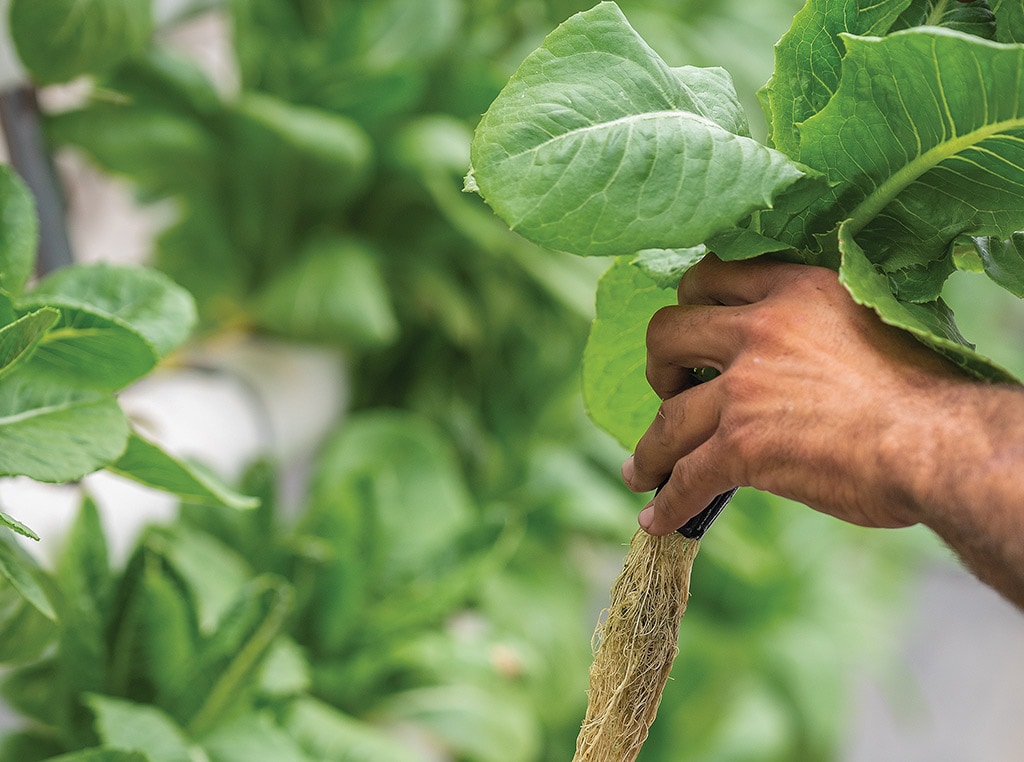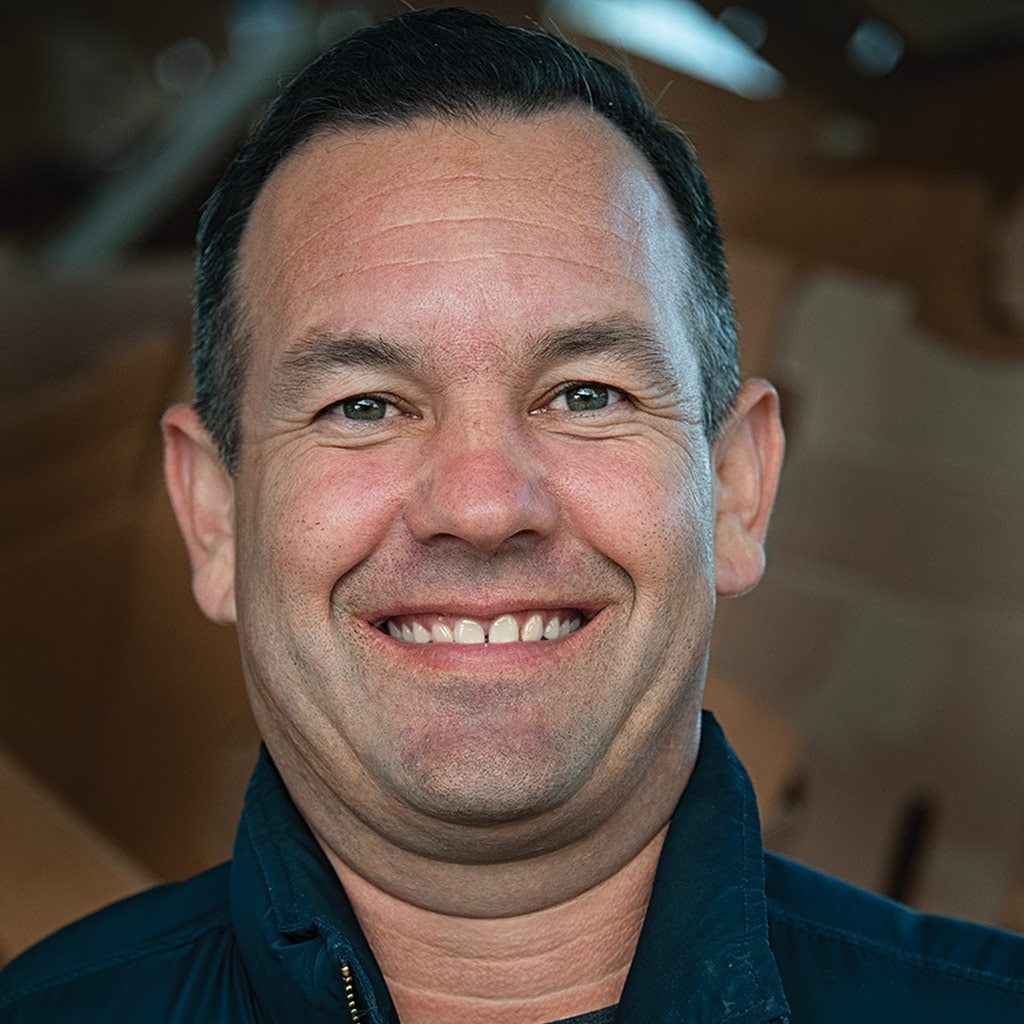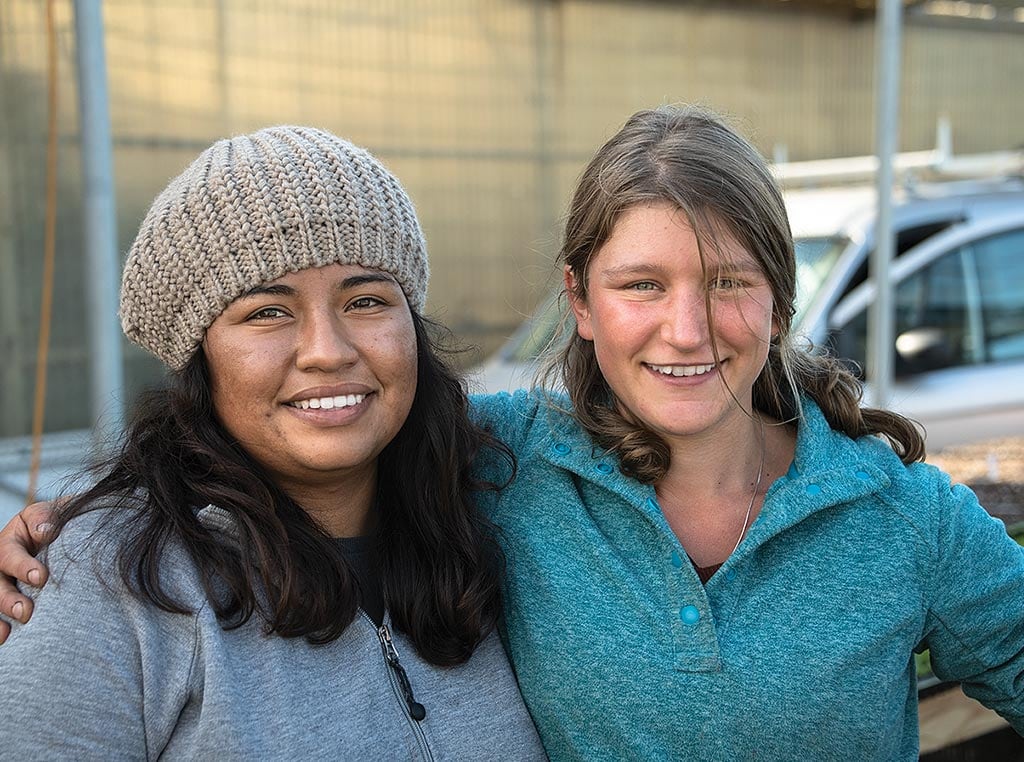Agriculture, Sustainability December 01, 2022
Building Bonds
.
Innovation drives Southern California food hub and regenerative farms.
Farmivore, the direct-market retail operation in Camarillo, California, is not your average farm stand. Far from it. In fact, everything about Farmivore is rooted in innovation, from the regenerative farms that supply its produce to the high-efficiency, bar coded system its team members use to fill every custom-packed box.
As a typical Southern California traffic jam starts to stack up on Highway 101 just a few feet from the door of the packing shed, Jeni Carranza pushes a cart alongside a metal shelving unit. She glances at a tablet's electronic screen.
Celery. One bunch.
Every item in the order is registered with a portable bar code scanner and packed, including a bouquet of flowers Carranza's family grew just a few hundred yards away. Finally, she stacks the box in a van her brother Flavio will drive on his delivery rounds through the Ventura area.
To the customer, ordering the box of produce on Farmivore's website was as simple and familiar as ordering a t-shirt on Amazon. Orders placed by noon on a weekday are delivered to customers' doorsteps by the next afternoon. In a variation on the community supported agriculture (CSA) model that provides many small farms with operating capital, subscribers enjoy a discount.
Regional system. But Farmivore is about more than moving more celery. The Farmivore goal is to create a regional food system in which farmers can afford to adopt regenerative practices.
"I see this as one supporting piece of an entire regional food system," says Mike Roberts of Baby Root Farm, co-founder of Farmivore. "You need your farmers' market, your farm stands, and grocery stores. But with Farmivore, you see farmers' market type customers and you also see folks who would never go to farmers' markets starting to buy."
Technology—the realm of Roberts' co-founder Max Becher, who now farms in Maine and handles the ordering and inventory system—is key to the big plan.
Because Roberts and Becher can tally orders online, much of the produce they buy from Farmivore partner farms has been pre-sold before they even call for it. Waste is minimal. Quality is excellent. And the whole process is almost effortless for customers.
"It allows us to offer hundreds of products," Roberts points out. "We're not trying to reinvent the wheel. We're just trying to be as efficient as we can to make this local food system happen. We're trying to lower the barrier to entry to healthy food."
It also represents a lot less effort and risk for the farmers, who wholesale to Farmivore at a price designed to provide a living wage.
"Max has to do some speculating, but not to the extent of a farmers' market where we're literally setting up a whole brick-and-mortar store, basically," Roberts notes.
Produce that isn't packed into a Farmivore box may go to an on-farm stand, a farmers' market, a donor-funded Feeding Families box for local people in need, or gleaned for a local food bank.
Above. Baby Root Farm is part of the McGrath Family Farmers Collaborative. Chard ready for market. Jeni Carranza (left) and Sonja Misko tend flowers for Carranza's family's operation, part of the Collaborative.
Farmivore's home base is the farm of fourth-generation farmer and organic pioneer Phil McGrath. McGrath contemplated a future with no successor in the family. Meanwhile, employees like Roberts and Cruz Carranza stepped up to rent acreage, and McGrath Family Farms spawned McGrath Family Farmers Collaborative.
Roberts describes it as a solar system. McGrath at the center, renting about 35 of his 300 acres to Collaborative members—Baby Root, the Carranzas, Exit Central Farm, and the irrepressible Inlakesh Amor of Living Systems Farm. Collaborative members assess themselves 10% of farmers' market sales to cover costs, invest in equipment, and plan for the future—with Farmivore at the hub.
They often hire each other to help with chores, and each of them is out every day, growing, selling, and teaching.
"The customer isn't at a point yet where they're so mission-based that they're going to sacrifice quality, freshness, or price," Roberts notes. "They're holding us to a standard of a global food system where everything's perfect, everything is grown without a blemish.
"We need society at large to demand the shift in direction," he adds. "It's an education process that has to happen, because we're all in this together." ‡
Read More

SPECIALTY/NICHE
Selling Off the Farm
But decades later, the cattle remain.

AGRICULTURE, FARM OPERATION
Water in the End Rows
Next generation builds hydroponic greenhouse in parents' field.






